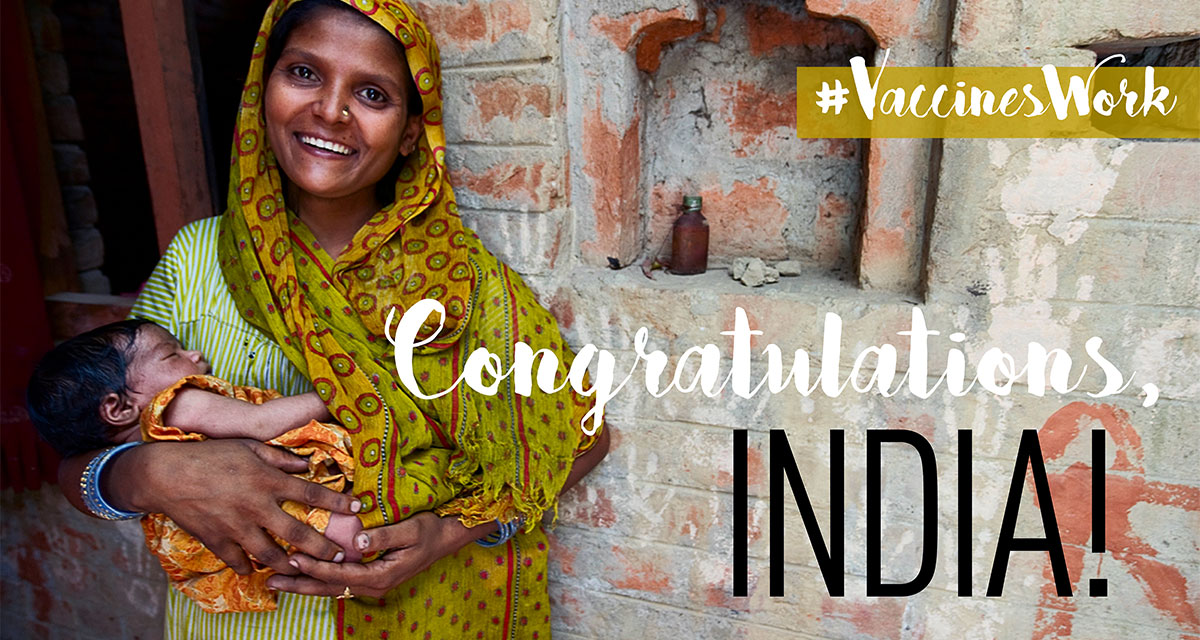Reflecting on India’s latest immunisation milestones
With two historic steps in two months, India’s Universal Immunisation Programme (UIP) has started a national journey to protect generations of children from the world’s biggest killers of under-fives.
First, last March, the phased introduction of rotavirus vaccine began, providing protection against a leading cause of deadly diarrhoea. Then, in May, a similar phased roll-out of pneumococcal vaccine also kicked off — tackling the primary cause of bacterial pneumonia.
Together these vaccines will not only help to save millions of lives, but also prevent millions more from being hospitalised.
Despite other significant steps in recent years, it is shocking that nearly 1.2 million children still die each year in India before reaching their fifth birthday. Why has my country taken so long to embrace life-saving newer vaccines, which are routinely available in even the poorest countries?
Firstly, public expenditure on health has remained low. The National Rural Health Mission was launched in 2005 as a flagship public health care programme and though it provided integration it did not bring significant additional funding. With the overall public health spend stagnant at only 1% of Gross Domestic Product (GDP), the UIP was limited to providing seven basic childhood vaccines.
India’s long and demanding fight against polio has also weighed heavily on longer term investments in the UIP. India is one of the very few developing countries to have funded a large part of its polio eradication efforts, committing a total of US$ 2 billion. However, with a budget more than three times that of the UIP, polio eradication has consumed significant financial and human resources, severely constraining national vaccination efforts.
There were other barriers too. A small but highly vocal group of Indian public health experts persistently opposed the introduction of newer vaccines into the publicly funded UIP. They filed pre-emptive litigation claiming that vaccines such as hepatitis B and the five-in-one pentavalent were unsafe, unnecessary and a drain on public resources. The cash-strapped government lacked adequate resources to mount a strong defence.
However, when India got rid of polio with its last case in January 2011, confidence in immunisation soared. It was the beginning of a dramatic turnaround in India’s fight against infectious disease. If vaccines could banish polio, anything seemed possible.
The Government took up the legal fight to introduce much needed newer vaccines into the UIP. The argument was simple: new, life-saving vaccines were commonly recommended by private doctors and already available on the private market, yet high prices placed these same vaccines out of reach of India’s poorest, most vulnerable communities — the very people who most needed their protection.
Once a vaccine is introduced into the UIP, all children have the same right to be immunised, free of charge and discrimination. The massive reach of the UIP, which aims to cover the 26 million children born every year in India, also guarantees predictable demand to vaccine manufacturers. This has a massive impact on price. For example, a full course of hepatitis B vaccines once cost nearly $100. Once India introduced the vaccine in its UIP in 2010, the government could buy a full course of hepatitis B for just 30 cents.
A clear presentation of the facts was enough for India’s judiciary to dismiss the long drawn out litigation. This historic ruling opened the door to a new era of protecting India’s children from life-threatening diseases by harnessing the power of the latest generation of vaccines.
With support from our Alliance’s partners, India successfully launched the pentavalent vaccine in 2013, protecting children against diphtheria, tetanus, pertussis, hepatitis B and Haemophilus influenzae type b. The Government also established its own National Technical Advisory Group on immunisation (NITAG). This Group is composed of experts, who systematically assess the national disease burden and make evidence-based recommendations for the introduction of new vaccines.
Thanks to the NITAG and the massive upgrading of the UIP, in the past year India has successfully introduced three new vaccines – pneumococcal, rotavirus and a combined vaccine against measles and rubella. The state of Punjab has also introduced human papillomavirus (HPV). In a country with the world’s largest birth cohort, this is no small achievement.
If India is to continue the fight to protect every child from vaccine-preventable diseases, it would need to dig deeper. Our Alliance has learned firsthand that universal coverage requires strong political will, sustained financing and the untiring commitment of millions of frontline health workers and mothers. As someone who is proud to have a played a role in both my country’s fight against polio and unlocking lasting access to new vaccines, India’s latest milestones on its immunisation journey fill me with immeasurable joy.





